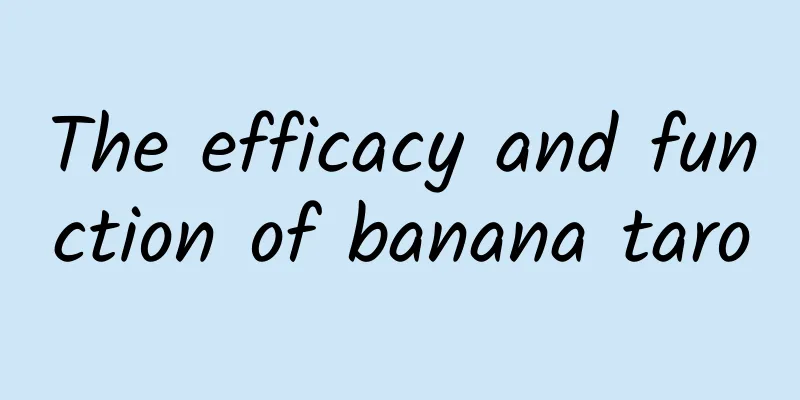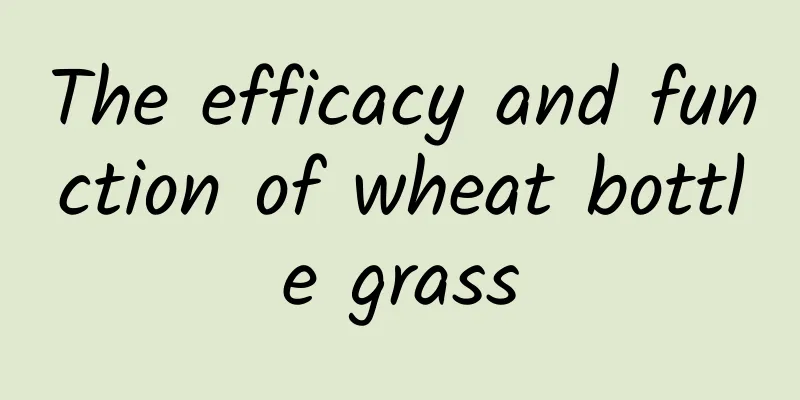What are the effects and functions of Eclipta prostrata

|
I don't know if you have ever heard of this thing called Eclipta prostrata. In fact, it is a very valuable Chinese herbal medicine that can help us achieve the effects of nourishing the kidneys and strengthening yang, as well as stopping bleeding and relieving pain. The medicinal value of Eclipta prostrata is very extensive. It is also very helpful for regulating qi and blood and nourishing the body. However, everyone wants to know more about Eclipta prostrata. So what are the effects and functions of Eclipta prostrata? Eclipta prostrata Aliases Jinling grass (Qianjin Yueling), lotus seeds grass (Tang Materia Medica), Houttuynia cordata, Houttuynia seeds (Compendium of Materia Medica), white Houttuynia (Lücanyan Materia Medica), Monkey head (Complete collection of essential household items), lotus grass (Southern Yunnan Materia Medica), ink bucket grass (Medical Biography), black tobacco, black vegetable, pig tooth grass (Compendium of Materia Medica), white flower grass, white flower Wedelia (Lingnan Collection of Medicinal Herbs). Mojicai (Modern Practical Chinese Medicine), wild water impatiens (Compilation of Medicinal Materials), pickled aconite, dripping aconite (Zhejiang Chinese Medicine Handbook), water wind fairy grass (Jiangsu Plant Medicinal Records), black ink grass (Guangxi Medicinal Plant Atlas), black head grass, ancient city ink (Guangxi Chinese Medicine Records), water hyacinth, ice grass (Hunan Medicinal Records), knotweed, jumping fish grass, holiday head flower, source It is the whole herb of the Channa intestines of the Asteraceae family. In summer and autumn, cut the whole grass, remove the mud and sand, and dry it in the sun or in the shade. In summer and autumn, cut the whole grass, remove the mud and sand, and dry it in the sun or shade. Original form Snakehead intestines (Tang Materia Medica) Annual herb. The stem is weak, erect or creeping, up to 30-60 cm high, and covered with hairs. The leaves are opposite, nearly sessile, linear-oblong to lanceolate, 4-10 cm long, 0.8-2 cm wide, cuneate at the base, mucronate or obtuse at the apex, entire or slightly serrated, and densely covered with white hairs on both sides. Inflorescence, axillary or terminal, with pedicels; involucre green, ovate to broadly bell-shaped, with a few bracts in 2 rows, covered with small coarse hairs; receptacle flat, with linear scales, on which are borne a few ligulate flowers and most tubular flowers; ligulate flowers female, in about 2 rows, narrowly linear, developed or undeveloped, white, entire or 2-lobed. The ovary is oval and flat, the tubular flowers are bisexual and fully developed; the corolla is 4 shallowly lobed, the lobes are ovate, covered with sparse hairs, there are 4 stamens, and the anther surrounds the style; the ovary is oval and flat, the style is columnar, and the stigma is 2-lobed. Achenes are yellow-black, oblong and flat, about 3 mm long, and bald at the top. When you rub its stems and leaves, black juice will flow out. Flowering period is summer. The fruiting period is from September to October. Habitat distribution It grows in fields, roadsides, stream banks and in shady and wet places. Distributed in Liaoning, Hebei, Shandong, Jiangsu, Zhejiang, Anhui, Fujian, Guangdong, Guangxi, Jiangxi, Hunan, Hubei, Sichuan, Guizhou, Yunnan and other places. It is mainly produced in Jiangsu, Jiangxi, Zhejiang, Guangdong and other places. Characteristics The whole dried herb is covered with white hairs. The stem is cylindrical, about 30 cm long and 3 mm in diameter: green-brown or purplish-red, with longitudinal ridges. Leaves are curled, wrinkled or broken, and green-brown. The top of the stem has a head inflorescence, most of which are already fruitful, with many black granular fruits. If you rub its stems and leaves after soaking them in water, they will turn black. It has a slight fragrance and a light, slightly salty taste. The ones with green color and no impurities are preferred. Chemical composition The whole plant contains 1.32% saponins, about 0.08% nicotinic acid, tannins, vitamin A, chrysanthemum intestinale, and various thiophene compounds such as α-terthienylmethanol and its acetate, 2-(butadiynyl)-5-(ethyleneethynyl)thiophene, and 2-(butadiynyl)-5-(4-chloro-3-hydroxybutyn-1-yl)thiophene. 2-(4-chloro-3-hydroxybutyn-1-yl)-5-(pentadiyn-1,3-yl)thiophene, (butene-3-yn-1-yl)dithiophene methanol acetate, and the like. The leaves contain cypermethrin, demethylcypermethrin and demethylcypermethrin-7-glucoside. Preparation Pick out impurities, remove residual roots, wash and steam thoroughly, cut into sections and dry in the sun. Flavor Sweet, sour and cool. ① "Tang Materia Medica": "Tastes sweet and sour, flat, non-toxic." ② "Southern Yunnan Materia Medica": "cold in nature, salty in taste." Meridians Enters the liver and kidney meridians. ① "Compendium of Materia Medica": "Enters the kidney, liver, stomach, large and small intestines." ② "Depei Materia Medica": "It enters the blood of the foot Shaoyin meridian." Function and indications Treat vomiting blood, coughing up blood, nosebleed, hematuria, bloody stool, bloody dysentery Cools blood, stops bleeding, tonifies kidney and replenishes yin. It is used to treat vomiting blood, coughing up blood, epistaxis, hematuria, bloody stool, bloody dysentery, bleeding from knife wounds, premature graying of hair, diphtheria, stranguria, leucorrhea, and itching of the genitals. ① "Tang Materia Medica": "It is used to treat bloody diarrhea. It can be applied to those who have acupuncture sores and have unstoppable bleeding. The juice can be applied to eyebrows to speed up the growth of hair." ② "Rihuazi Bencao": "It can drain pus, stop bleeding, clear the small intestine, and be applied to all sores and silkworms." ③ "Southern Yunnan Materia Medica": "Strengthen teeth, blacken beard, and wash nine kinds of hemorrhoids." ④ "Compendium of Materia Medica": "Blackening hair and beard, benefiting kidney yin." ⑤ "Compendium of Materia Medica": "It can treat hematuria and stranguria caused by kidney deficiency." ⑥ "Essentials of Herbal Medicine" says: "It can treat injuries from falls, regulate alcohol poisoning, resolve phlegm, kill mites, stop itching, and dry up water." ⑦ "Classification of Herbal Properties": "Stops bleeding, nourishes the kidney, reduces heat, and reduces swelling. Treats stranguria and metrorrhagia." ⑧ "Nanning City Pharmacopoeia": "Treats eye diseases and cataracts." The above is an introduction to the effects and functions of Eclipta prostrata. Nowadays, many friends may accidentally suffer injuries during their daily exercise. If they cannot recover well, it will easily lead to blood circulation problems and bruises. At this time, you can use Eclipta prostrata to help relieve the symptoms. |
<<: What are the effects of mistletoe
>>: What are the effects and functions of Ophiopogon japonicus
Recommend
The efficacy and function of syrup
After thousands of years of sedimentation and acc...
As fat as two wolves! Should the wolves in Hoh Xil be fed?
Recently, a lone wolf in Hoh Xil became an Intern...
The efficacy and function of white knotweed leaves
Traditional Chinese medicine is needed to treat d...
Behind the debut of Dinosaur Star, there are 19 fractures
In the Late Jurassic, an Allosaurus limped toward...
The efficacy and function of rusty nails
Chinese medicine has different effects on our bod...
What are the medicinal values of black snake?
As we all know, the black-necked snake is somethi...
The cargo spacecraft does not carry people, is it a manned spacecraft?
Cargo spacecraft are the backbone of manned space...
Are domestic flowers not as fragrant as wild flowers? That just shows you're ignorant.
Chrysanthemum, also known as wild chrysanthemum, ...
Beware! The AI screenshots that are circulating all over the Internet may be becoming a new rumor-making machine
On social media and WeChat Moments, we often see ...
Can I put the leftover mooncakes in the refrigerator?
The Mid-Autumn Festival holiday is over Most peop...
"Sanxing Village" is not "Sanxingdui", which may solve the mystery of the origin of civilization in the lower reaches of the Yangtze River
On November 18, the much-anticipated Sanxing Vill...
The efficacy and function of forest ginseng
Among traditional Chinese medicinal materials, ma...
In just 20 minutes, the 8-year-old boy's entire eyeball was dissolved, leaving him blind for life! If you have this thing at home, throw it away immediately
Expert of this article: Yang Chao, PhD in Chemist...
How much Cordyceps should be taken to be effective?
Cordyceps is a food with great nutritional value....









